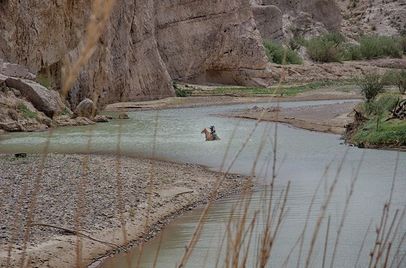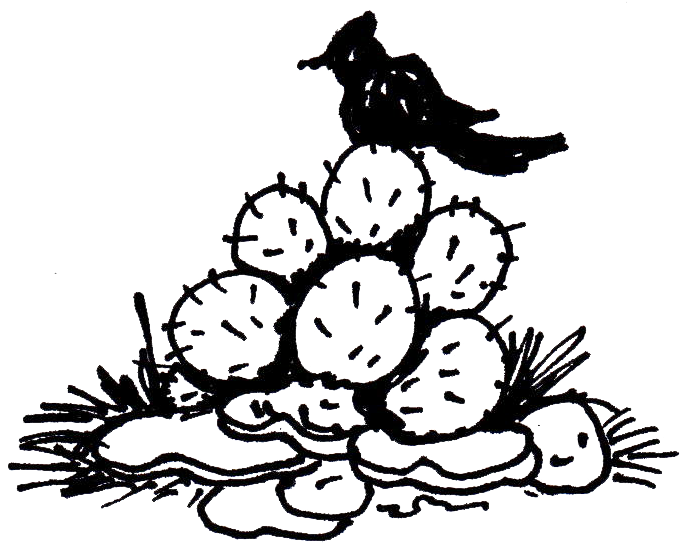
We gave free geography lessons in addition to prices and trip itineraries. Many callers didn’t understand that if you’re on a river that serves as a border between two countries, the “other” country will be adjacent to said river. Hello, people? Get out your maps! I grew up on the east coast, but even as a little kid I knew the Rio Grande separated “us” and “them.” It would take living by the river to understand the ways in it which it draws us together much more than it separates us. But I digress.
During the early days of owning Big Bend River Tours, my husband was busy running Restaurante Garcia in Paso Lajitas, Mexico. Except for driving an occasional shuttle, he didn’t have much to do with BBRT. In spite of this, he knew all the guides and they knew him. This was because his restaurant served authentic Chihuahuan Mexican food, prepared when you ordered, and served hot and mouth-watering.
One morning a group came to sign in for their half-day river adventure. In those days of higher water, the trip went from Grassy Banks to Lajitas. We stopped along the way to serve a snack and did it right. It always surprised and delighted people. I think they expected us to hand out packets of peanuts or cheese crackers. Instead, we set up a camp table with a tablecloth and served various cheeses, fruit, crackers, cookies, chips, and dips. Customers loved it.
This group was more concerned about seeing Mexicans than most. It frustrated these visitors that we had no control of our neighbors or the wildlife and couldn’t promise they would see either. Nor could we swear how either would act if we did see them.
“We normally see ducks and birds—” I began.
“What about Mexicans?”
I headed into my spiel about one side of the Rio being the U.S. and the other side being Mexico. It was possible to see a Mexican, I explained.
“What do they do if they see us?”
“They usually wave.”
“Do you ever have trouble?”
How do you explain to a man from Houston or Louisiana or any other faraway place that these “foreigners” are peaceable country folks? They’re our friends and neighbors. Sometimes we marry them.
Eventually the group got onto the river. I’ve forgotten which guides went, but there were two or three. When the trip returned, the customers were ecstatic. They’d had a blast. They met a Mexican man! And he had a horse! The kids got to sit in the saddle! The entire party was ridin’ high.
After the customers left, the guides told me quite a story. They had the snack set up on the Mexican side, after much cajoling and assuring the timid bunch that they stopped there all time and never saw anyone. Their customers had just served their plates when they heard hoof beats. In the distance, a man on a horse was galloping towards them calling, “Hah, Gringo! Aye, Gringo!”
The customers panicked. Women and children peeked out from behind the men. The guides explained that they tried to stay cool and keep everyone calm, but this stranger kept on coming and calling out “Gringo!” He wore a cowboy-style Mexican sombrero and looked one hundred percent mexicano, no mistaking it. The horrifying thing was that a bandana was tied over his mouth and nose, bandido style.
The cowboy came to the edge of their lunch camp. He yanked off the bandana, shook out the dust, and jammed it into the pocket of his jeans. He jumped off the horse with a “Ya, Gringo!” and strode towards them with spurs jangling. A woman screamed and people began scrambling into the rafts. The cowboy held out his hands in frustration, asking the guides in Spanish why they didn’t recognize him. It was my husband.
They had a relieved laugh and he accepted a cold drink and was introduced to everybody. He charmed them in his quiet way and with his big brown eyes and totally broken English.
“Why did you keep yelling “gringo?” someone asked. “It scared us.”
“Oh, Gringo—he my horse.”



 RSS Feed
RSS Feed


